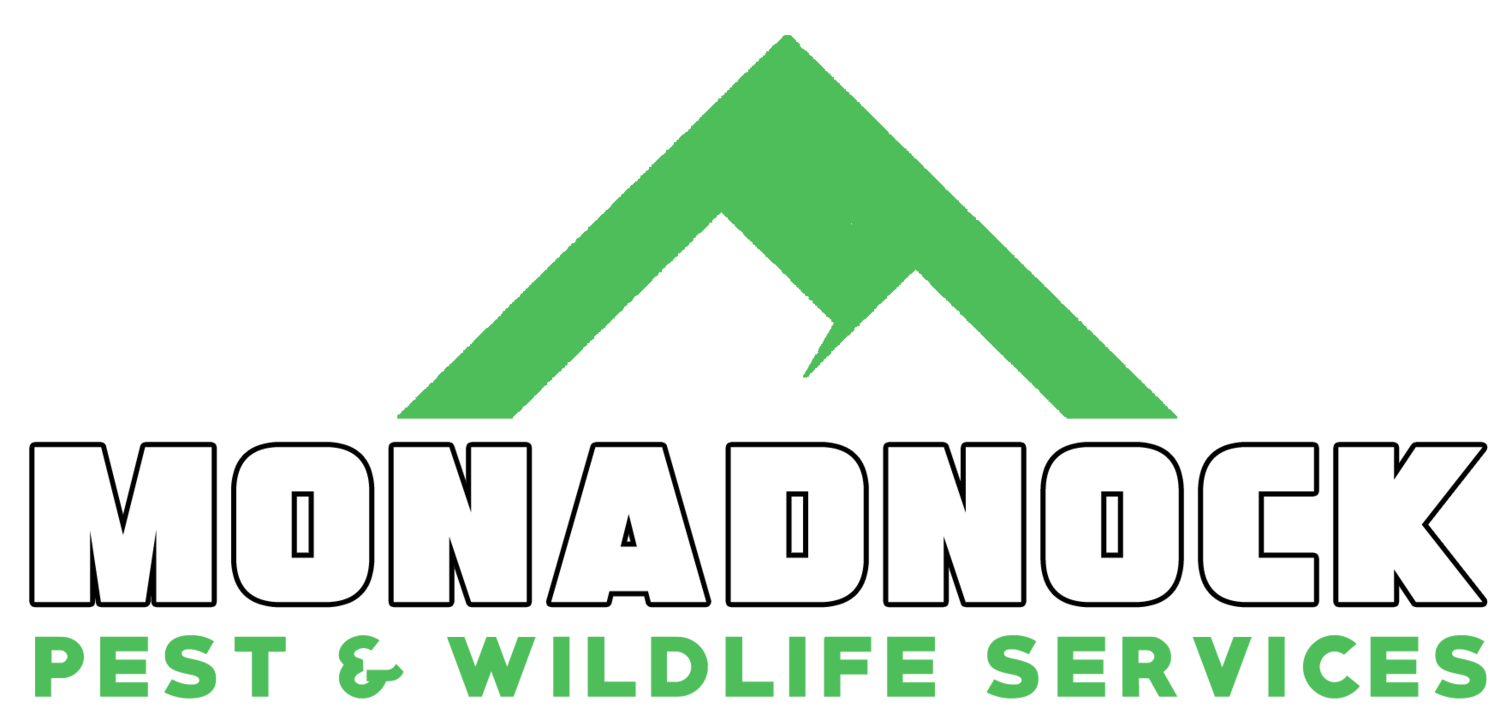Wasp Control: Taking the “sting” out of summer sizzle
Baldfaced Hornets guard a nest in Mont Vernon, NH (Photo | Monadnock Pest & Wildlife Services)
Its officially summer in New Hampshire, which means home projects, cookouts, outdoor get-togethers and other forms of backyard antics that die-hard New Englanders have been clamoring for since the last spell of snowfall tapered off months ago.
With decks and patios getting their seasonal flex of good-use, one particular group of insects are bound to become more noticeable during the “dog days of summer” – our local wasp and hornet populations!
Know Your Foe
NH is home to several species of stinging insects that all fall under the same family known as Vespidae; all with varying degrees of temperament around humans. One of the most common bouts of confusion surrounding stinging insects is identification, and the reference to such. Wasps are not the same as bees, and hornets are not the same as solitary wasps. Understanding the differences between species and genus is paramount to determining whether the stinging insect you’ve encountered poses a safety threat.
Paper Wasp guards her umbrella-like nest.
For example, there’s our emblematic paper wasp species; which are commonly characterized by their skinny appearance, long dangling legs and umbrella-shaped “open-comb” nests. New Hampshire is home to two primary species of paper wasp - the brown paper wasp (Polistes fuscatus) and the European paper wasp (Polistes dominula). These wasps tend to swarm the exterior of structures on hot sunny days, and while they can be aggressive, are not quite as ornery as their vespid cousins.
Yellow-jackets (V. germanica, V. alascensis, & V. maculifrons) are eusocial wasps that are infamous for their aggressive behavior. You may notice these “stubbier” striped vespids hovering around soda cans at the local dump or picnic areas. They’re iconic with building elaborate nests in cavities of homes, earth, or trees; and they’re even more known to defend those nests with aggressive fervor.
Of course, there’s also the most infamous of these species, the more aggressive Bald-faced Hornet (Dolichovespula maculata) – known for its large elaborate “basketball-sized” paper nests that hang from trees and buildings. This species is predatory, and its knack for hunting other insects (including other wasp species) makes them particularly mean when defending a nearby nest. Their large appearance and identifiable white face are quick tip-offs to their identification, and their sting (in my humble experience) packs the most powerful “punch”.
All three of the above-mentioned species require wood, which they mix into a pulp with their oral fluid to construct their nests. Each spring, the first generation of larvae develops into infertile females, which will become the workers of the newly established colony. The second stage of larvae will mature into males and fertile females - which will become the next generation of queens. The nests are typically only active for one season, as the process starts anew each spring.
Not All “Bad”
Monadnock Pest co-owner Jeff Traynor holds a Baldfaced Hornet nest extracted from a client’s home in NH (Photo | Monadnock Pest & Wildlife Services)
It should be noted that these insects are, in fact, beneficial when not raiding our personal space. The above-mentioned “big three” are considered omnivorous, so they rely on both smaller insects (some “bad” bugs) as well as nectar from plants to survive. They typically pollinate in late summer when they are foraging for nectar. In addition to the three species listed, the family also includes several species of solitary wasps - such as mud daubers, digger wasps, and the intimidating yet virtually harmless cicada killers. When we think of “bees” as primary pollinators or beneficial insects, it can be easy to forget these slightly more intimidating species.
According to some online reports, approximately 2 million Americans are allergic to the venom of stinging insects – which can lead to anaphylaxis and death in many cases. Homeowners should be aware of wasp harborage areas around the home, with focus on sunny areas – south and west facing sides or the undersides of decks and porches protected from weather. Soffits and vent hoods are also prime nesting areas. In the early stages of development, nests can be manually removed or treated with an appropriately labeled insecticide. As the broods in these nests grow larger in numbers and become more aggressive in late summer, the assistance of a professional may be needed for safe removal.
Monadnock Pest & Wildlife Services is here to assist NH residents with stinging insect conflict! Call or email for a quote today!


